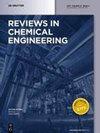海水膜蒸馏(SWMD)向单机零液排放(ZLD)脱盐的研究进展
IF 4.9
3区 工程技术
Q1 ENGINEERING, CHEMICAL
引用次数: 9
摘要
海水膜蒸馏(SWMD)是一种很有前途的分离技术,因为它可以作为一个独立的海水淡化装置运行。本文回顾了提高实验室到中试规模MD性能的方法,包括操作策略,模块设计和专门定制的膜。对SWMD和海水反渗透进行了详细的比较,进一步分析了SWMD的主要缺点。SWMD的独特之处在于,它能够在极高的盐去除率和极高的进料浓度下运行,这凸显了SWMD在零液体排放(ZLD)条件下运行的潜力,从而产生高纯度的水,同时回收盐,并消除了盐水处理成本。然而,技术挑战,如热能需求、低效的传热和集成、低水采收率以及缺乏对实际有价盐采收率的研究,阻碍了ZLD SWMD的商业化。这篇综述强调了应用选定的策略来推进ZLD SWMD商业化的可能性。建议包括间歇性去除有价盐,深入研究新膜的稳健性,模块和配置,利用低成本热交换器,以及降低可再生能源集成SWMD工厂的资本成本。本文章由计算机程序翻译,如有差异,请以英文原文为准。
Advances in seawater membrane distillation (SWMD) towards stand-alone zero liquid discharge (ZLD) desalination
Abstract Seawater membrane distillation (SWMD) is a promising separation technology due to its ability to operate as a stand-alone desalination unit operation. This paper reviews approaches to improve laboratory-to-pilot-scale MD performance, which comprise operational strategies, module design, and specifically tailored membranes. A detailed comparison of SWMD and sea water reverse osmosis is presented to further analyze the critical shortcomings of SWMD. The unique features of SWMD, namely the ability to operate with extremely high salt rejection and at extreme feed concentration, highlight the SWMD potential to be operated under zero liquid discharge (ZLD) conditions, which results in the production of high-purity water and simultaneous salt recovery, as well as the elimination of the brine disposal cost. However, technical challenges, such as thermal energy requirements, inefficient heat transfer and integration, low water recovery factors, and lack of studies on real-case valuable-salt recovery, are impeding the commercialization of ZLD SWMD. This review highlights the possibility of applying selected strategies to push forward ZLD SWMD commercialization. Suggestions are projected to include intermittent removal of valuable salts, in-depth study on the robustness of novel membranes, module and configuration, utilization of a low-cost heat exchanger, and capital cost reduction in a renewable-energy-integrated SWMD plant.
求助全文
通过发布文献求助,成功后即可免费获取论文全文。
去求助
来源期刊

Reviews in Chemical Engineering
工程技术-工程:化工
CiteScore
12.30
自引率
0.00%
发文量
37
审稿时长
6 months
期刊介绍:
Reviews in Chemical Engineering publishes authoritative review articles on all aspects of the broad field of chemical engineering and applied chemistry. Its aim is to develop new insights and understanding and to promote interest and research activity in chemical engineering, as well as the application of new developments in these areas. The bimonthly journal publishes peer-reviewed articles by leading chemical engineers, applied scientists and mathematicians. The broad interest today in solutions through chemistry to some of the world’s most challenging problems ensures that Reviews in Chemical Engineering will play a significant role in the growth of the field as a whole.
 求助内容:
求助内容: 应助结果提醒方式:
应助结果提醒方式:


